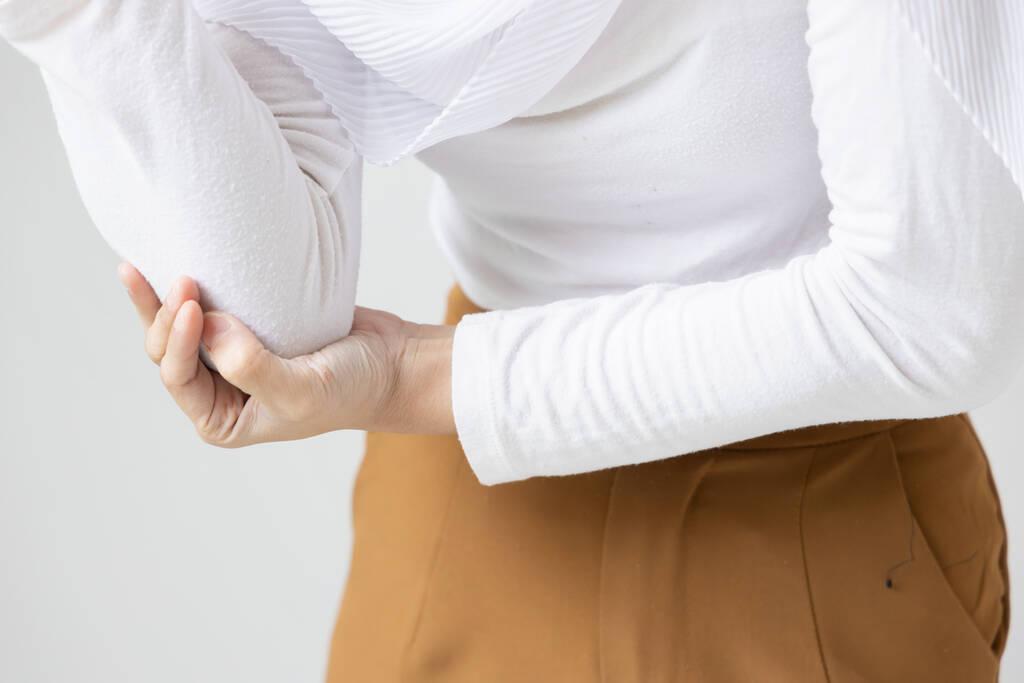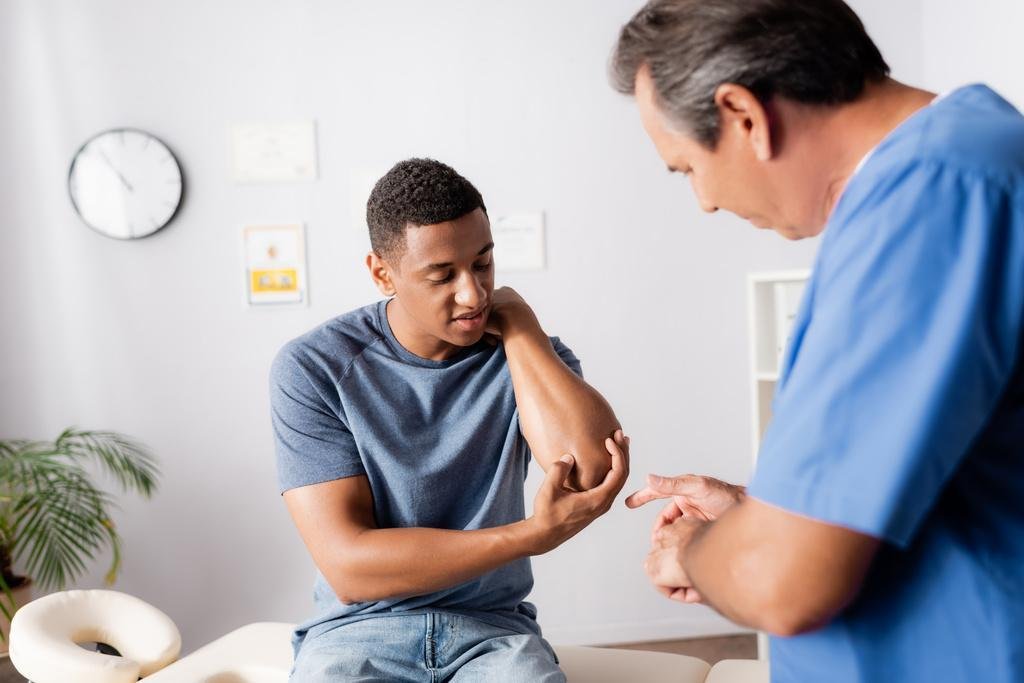Golfer’s elbow, medically known as medial epicondylitis, is a condition characterised by pain and inflammation on the inner side of the elbow where the tendons of the forearm muscles attach to the bony bump on the inside of the elbow. One of the leading golfer’s elbow causes is repetitive or excessive stress on the wrist and forearm muscles, typically from activities that involve repetitive gripping, twisting motions of the wrist, or repeated flexing of the fingers.
Importance of understanding its causes
Understanding the causes of any problem or situation is crucial in devising effective solutions, anticipating future occurrences, and fostering awareness for prevention and better decision-making.
 Understanding Golfer’s Elbow
Understanding Golfer’s Elbow
Detailed definition of Golfer’s Elbow
Golfer’s elbow, or medial epicondylitis, is a condition causing pain where the tendons of your forearm muscles attach to the bony bump inside your elbow.
Symptoms associated with Golfer’s Elbow
Golfer’s elbow symptoms include tenderness and pain on the inner side of the elbow, stiffness, weakness in hands and wrists, and numbness or tingling sensations.
Causes of Golfer’s Elbow: An Overview
Discuss repetitive motion as a cause
Repetitive motion often causes strain injuries_like tendonitis or carpal tunnel syndrome, resulting from prolonged muscle stress without ample rest periods, commonly observed in manufacturing or desk-based jobs.
Highlight overuse of forearm muscles
Overuse of forearm muscles, common in professions requiring repetitive tasks, can lead to strains or tendonitis. Proper rest and stretching exercises are important preventive methods.
Discuss incorrect technique as a possible cause
The incorrect technique could potentially be a cause for suboptimal outcomes in numerous areas like athletics, medical procedures and artistry, leading to decreases in performance or dangers.
Risks and Prevalence of Golfer’s Elbow
Age and gender susceptibility
Age and gender susceptibility refers to the differing likelihoods of contracting diseases based on one’s age and sex, influencing treatment strategies in various biomedical fields.
Professional vs. amateur golfers: Who is at higher risk?
Professional golfers are at a higher risk of injuries due to their intensity and frequency of play compared to amateur golfers, who play less frequently.
Prevention of Golfer’s Elbow
The role of correct techniques in prevention
Correct techniques play a vital role in prevention, aiding to mitigate potential issues or engagements proactively while minimizing risk and damage. They ensure safety and efficiency.
Importance of regular rest periods
Regular rest periods are critical for maintaining physical health, enhancing mental focus, reducing stress and ensuring optimum performance in professional and personal endeavours.
Physical exercises that can help prevent Golfer’s Elbow
Regular strength training, like wrist curls and forearm extensions, along with flexibility exercises for the elbow muscles can help prevent golfer’s elbow effectively.
Treatment of Golfer’s Elbow
Non-surgical treatments
Non-surgical treatments include medication, physical therapy, and lifestyle changes. They are less invasive options to manage various health conditions and improve quality of life.
Overview of surgical options
Surgical options vary based on condition severity, patient health, and desired outcomes. They range from minimally invasive laparoscopic surgery to complex open-heart surgeries.
Importance of physical therapy in recovery
Physical therapy is vital in recovery, aiding the restoration of movement and function, reducing pain, and preventing further injury. Essential for comprehensive therapeutic care plans.

Leave a Reply